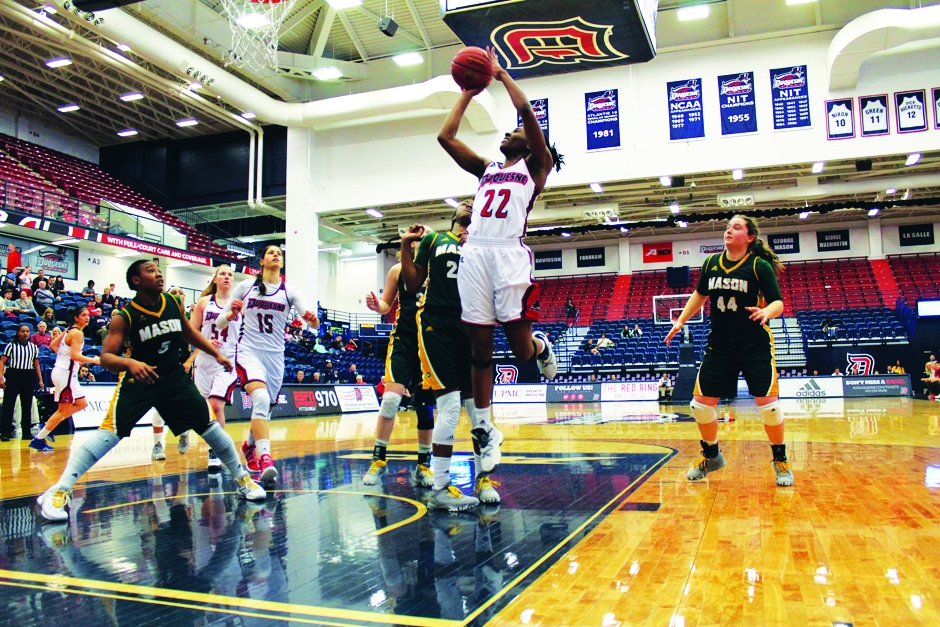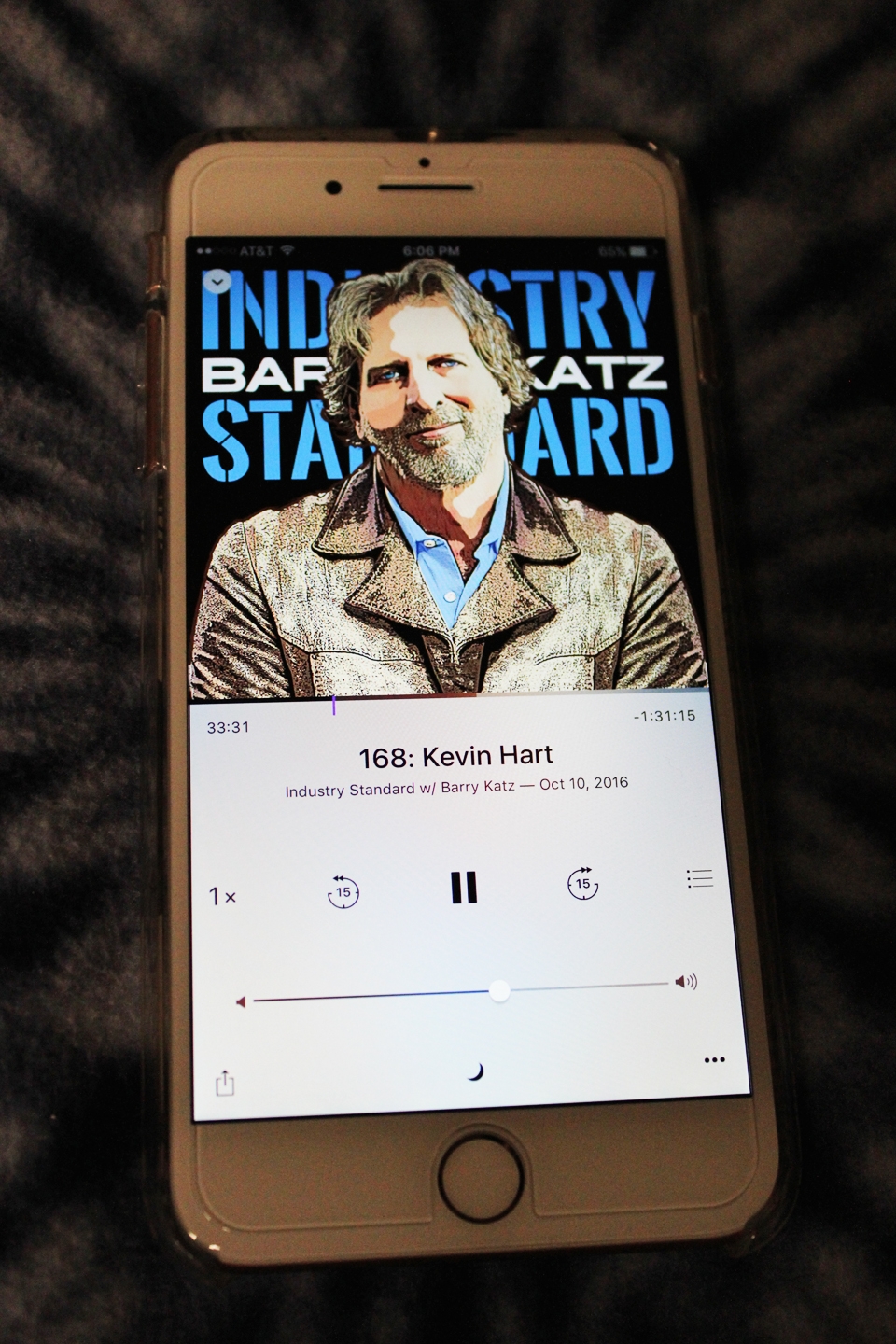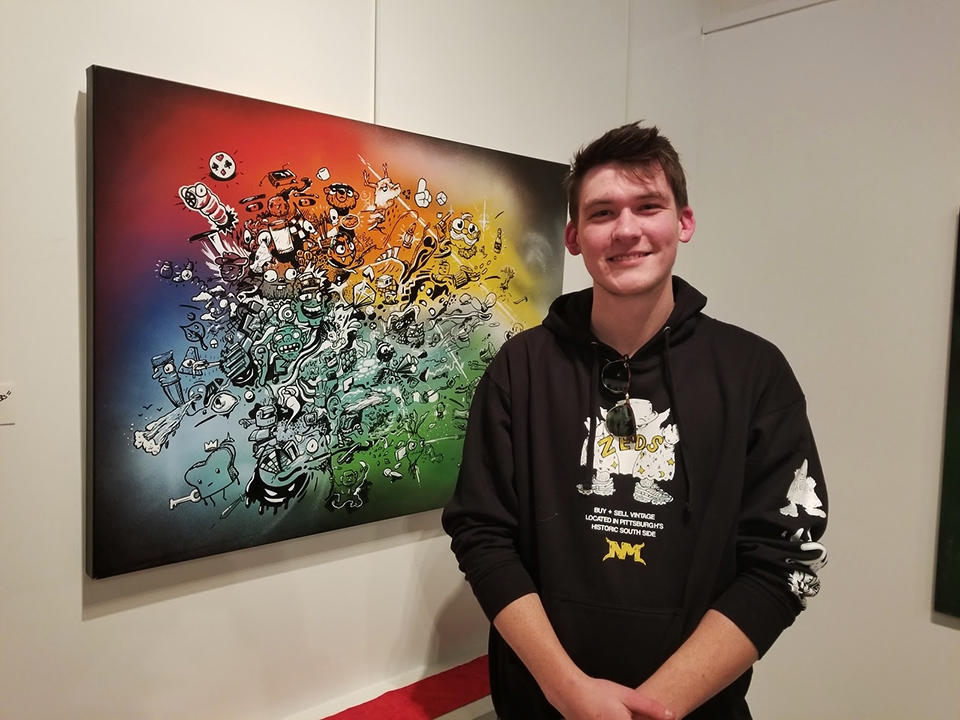
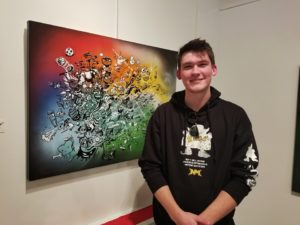
Sean Armstrong | Staff Writer
01/31/19
For many upperclassmen, graduation is fast approaching, and with it the splendor of seeing friends move on to pastures new.
With this joy also comes the question: What’s next? That inquiry, depending on who you are, is either a point of contention or excitement. Nearly two years ago, that was the question University of Pittsburgh graduate Cameron Schmidt was seeking an answer to.
Like many people encountering a big life change, a new career choice can be the make-or-break moment in how someone rises to the occasion or crumbles under the pressure of it. For Schmidt, that new perspective was a pilgrimage of sorts.
Schmidt, a graphic artist, always had an interest in artwork and creating, but in his college years, that was somewhat suppressed due to his studies in civil engineering.
“I was always doodling in the side of my notes. When I went to college I was like, okay, this needs to stop.” Schmidt said. “I’ll get a separate notebook so I can doodle on the side and then take my notes when I need to.”
Two notebooks, while a practical solution to a common problem, does not address the split attention aspect of this habit.
“I didn’t really focus until [about] eight months before I graduated,” Schmidt said. “So, a year and a half ago I was just like, this [art] is something that you have this drive to do, and if you just put work into it like it’s any other craft, you will build those skills.”
Having to pick between what you love to do and what is practical is not an easy decision. This choice is at the heart of the stereotypical STEM versus liberal arts debate often echoed throughout academia.
Luckily for Schmidt, his options were made easier upon visiting Berlin. “If you’ve ever been to Berlin, it really is just paint everywhere. They have every form of graffiti from little small throwies to big burner pieces across the whole wall … They have totem pole pieces that just go down the side of a building and it’s amazing,” he said.
While the city itself poses a robust amount of street art, it was Teuffelsburg, a kind of outdoor graffiti museum created at the site of a former military base, that would reignite his artistic drive.
“I went [to Berlin] and I went to Teuffelsburg … and it was absolutely mind-blowing — the depth and the amount of work that they had around that city,” Schmidt said.

A section of Teuffelsberg, the Berlin-based outdoor gallery of graffiti and street art.
Teuffelsberg is about a two-mile hike through the woods away from the suburbs of Berlin. To put it simply, it is not a quick stop; this is not something people do not simply drop by to see while on vacation.
“I went there, had a bit of a change of heart, had some things happen in my personal life around the same time and it really got me thinking about what is going on, and what I wanted to do long term, what was fulfilling, and it was clear that art was that.”
Upon arriving at the graffiti park, it is clear that most of these buildings would be condemned if not for their new-found purpose. The sheer amount of dust and decay is choking upon entering any given building. Imagine how the investigators feel upon entering one of the houses on the show Hoarders and you can easily translate that into what this experience was like. In order to see much of the artwork, it is necessary to go into buildings with terrible air quality.
This journey is not something a person does if they have a passive interest in the arts.
“At the time I was finishing off the [Civil Engineering] degree. It was getting to that toughest, but most real point where you’re doing the projects that are real-life stuff and doing that work that is fulfilling, but it wasn’t for me,” Schmidt said.
“I was restless and I was too tied to this idea of getting paid for [stuff] that I made,” Schmidt said. “You know, creating something and that being wanted and then maybe, something I could make money off of.”
The civil engineering degree satisfied that desire to create as well as the need for financial security, but it failed to address Schmidt’s love for art in the same way that Teuffelsburg touched it.
“100 percent, I do not regret doing [the civil engineering degree] because I have learned a lot of science and math… And I love science and integrating cool concepts into my art whenever I can sneak them in.”
Now, almost two years after Schmidt’s realization that art was one of the most important things in his life, he had his first art show, External Forces, displaying artwork inspired by Picasso, Warhol and of course, the streets of Berlin.
In one of the pieces at his show on Jan. 25, Schmidt made a sculpture of a spray can that had a base made to resemble a pool of water or ink. The wood used to create the base of the sculpture is made of Medium Density Fibreboard (MDF).
MDF is condensed sawdust that allows the artist to cut into it at any angle without the problem of going against the grain. As a result, the number of shapes that can be created out of such a product is far easier than regular wood. This is one of the most blatant displays of the knowledge Schmidt acquired from his degree applying to his art.
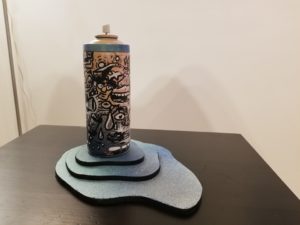
Here, Schmidt utlizes Medium Density Fibreboard, a material he learned of in his civil engineering studies.
However, when asked how to describe his art, Schmidt isn’t sure what to say. “Right now I’m just trying to get into people’s eyeballs. I feel like if people see my work they’ll like it. And if they don’t that’s fine with me, but I just want to get out there more,” he said. “So, what I want people to know about me is just that I try to paint [stuff] that looks cool or makes you think or reminds you of stuff, but more than anything, I’m trying to be original.”
Still, when you ask his friends what they think about his art, and in particular what was on display at the art show, they have much more to say.
“I think Cam’s art is honestly just incredibly fun to look at, especially the new stuff at External Forces. You could look at the same piece 20 times and see something new every single time,” said Alec Munson, a Pittsburgh rapper and friend of Schmidt. “His character design is so distinct and unique yet so uniform that it seems [like] they are all of the same sort of universe he’s creating. You know almost immediately when a piece is by Cam.”
Cole Marks, another friend and the frontman for the group Back Alley Sound, describes Schmidt’s artwork differently. “I would describe Cam’s artwork as equal parts whimsical and disciplined. His work really thrives in this sweet spot between chaotic and nostalgic, which translates to people regardless of the medium.”
Still, even though the choice has been made for Schmidt to follow his passion, that does not mean that the journey is over. There is still plenty of growth to be had. “For me, moving forward after the show, the goal is to kind of keep my prints and my sticker packs going and that passive income so I can get myself to a point where I can actually be sustainable in this, but more than anything, education [is my goal],” Schmidt said.
“[My goal is to start] working on newer mediums and learning more about art history, because I really only know about the rock stars of art,” Schmidt said. “I need to learn more about movements and individual times before I feel confident, saying that I know the world I’m trying to join.”


